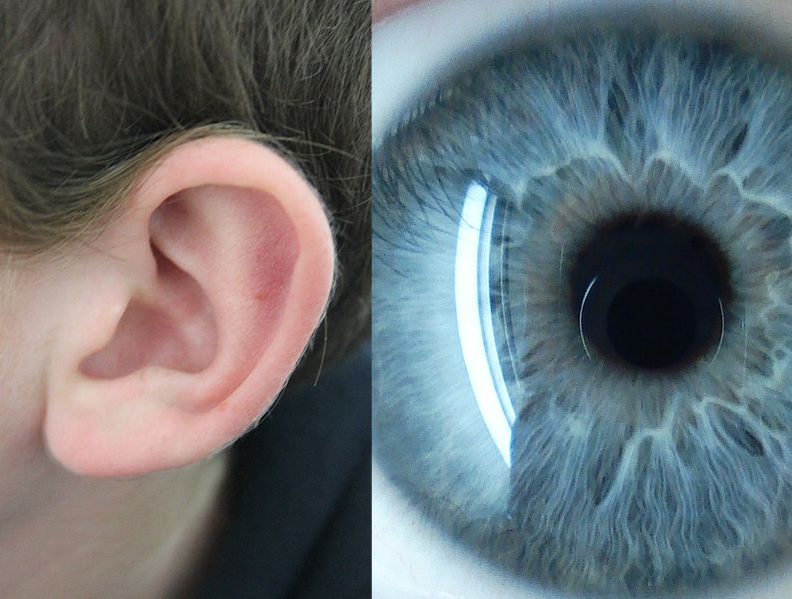Reading, Radio, and Video
by Andy Boyd
Today, eyes and ears. The University of Houston presents this series about the machines that make our civilization run, and the people whose ingenuity created them.
If you're experiencing this episode of Engines, you're doing it in one of two ways: you're either listening to it, or you're reading it on the Engines website. Either way you're getting the same material. Or are you?

How we listen and how we see. Photo Credit: Wikimedia
The thought really drove itself home while reading an article from the Chicago Tribune. The headline read, "Restrained Score of 'Patton' Deserves a Second Listen." Let me read the passage from the article describing music from the 1970 Academy Award winning film.
"We first hear repeated trumpet triplets," writes Michael Phillips, "which sound like the battle cry of a slightly deranged leader. The repeat-and-fade fanfare sounded mysterious, bordering on threatening." I realized that for anyone who's seen the film, the description is both accurate and evocative. The theme came flooding into my mind as I was reading. But it also led me to ask how anyone who hadn'tseen the film could possibly connect the description with the aural experience.
Of course, we can't. When reading we must resign ourselves to the writer's description. Not so on radio. Here's the mysterious repeat-and-fade fanfare.
[audio: Main Title of Patton]
Radio provides a more colorful palette than the written word. Sounds and music can be included, with the added benefit of vocal inflection. Although if we really want to paint a picture, audio and visual images would do even better. The Engines website includes pictures and an occasional video.
Yet the more we add, the less we leave to the imagination. How could the following passage, taken from Charles Dickens' Great Expectations, ever hope to be improved upon? Listen, as a scared young boy called Pip describes a man coming in from a church graveyard. The man was:
A fearful man, all in coarse grey, with a great iron on his leg. A man with no hat, and with broken shoes, and with an old rag tied round his head. A man who had been soaked in water, and smothered in mud, and lamed by stones, and cut by flints, and stung by nettles, and torn by briars; who limped, and shivered, and glared and growled; and whose teeth chattered in his head as he seized me by the chin.
We can't help but form a vivid image of this frightful old man. And a picture would only detract from what we see in our minds.
_1.png)
Frank Losee and Jack Pickford in Great Expectations. Photo Credit: Wikimedia
Reading. Radio. Video. All versatile means for communicating. Though, radio has one distinct advantage: it's hands and eyes free, making it ideal for driving to work or preparing meals. But I suspect you've already figured that out.

Driving the new Mercedes A-Class 2012. Photo Credit: Wikimedia
[audio: Main Title of Patton]
I'm Andy Boyd at the University of Houston, where we're interested in the way inventive minds work.
(Theme music)
M. Phillips. "Restrained Score of 'Patton' Deserves a Second Listen." Chicago Tribune. Reprinted in the Houston Chronicle, November 11, 2016: p. D2.
This episode was first aired on December 1, 2016